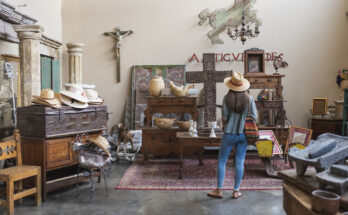Make Half-Landings More Cohesive With Simple Color Hacks
Staircase half-landings can frustrate even the most relaxed of decorators. Their prominence within the stairwell, the feeling of an empty, wasted area, as well as their placement between two different floors can affect the cohesiveness of a space. The key to unlocking this particular decor puzzle is color. As one of the fundamental elements of interior design, color is the easiest way to make your home look more unified.
By sticking to a cohesive color palette, you can achieve continuity between spaces (even if you love experimenting with different styles across the house). This should always include your staircases and, by extension, their landings. They might be overlooked as transitory, functional spaces, but it’s exactly that transitional, connecting nature that makes them vital players in achieving a cohesive whole. For this, apply simple color hacks like matching the carpet or the flooring of the half-landing and stair treads to adjoining rooms and painting the wall the same accent color that’s used throughout the house.
How to integrate half-landings into your overall decor
An easy, straightforward solution is matching the color or material of the flooring in your stair treads and half-landing to those of the immediate connecting rooms. Stair runners or wall-to-wall carpeting that extend into the hallways offer a more creative option, allowing you to play with colors and patterns, as long as they fit into your overall palette.
If you’re bothered by the lack of decoration in your half-landing, however, a great way to make it pop while ensuring cohesion is to add an accent wall. Paint it in a solid color, add a unique wallpaper, play with textures like decorative panel molding or exposed brick, or create a gallery wall with pictures, art, your favorite vinyl records, or plants. No idea is too bold when it comes to an accent wall — that’s the whole point of it! Still, always be mindful of the colors you use if you want to make sure it fits with the rest of your decor.
A simple way to figure out what shades work best for your accent wall is to follow the timeless 60-30-10 color rule (60% dominant color, 30% secondary color, 10% accent color). Normally, walls or flooring will provide you with your dominant color, while larger furniture and rugs bring in the secondary color. Smaller items and decorations round it up nicely in an accent color. After you’ve identified which colors in your home best fit these boxes, you’ll have found your accent color.



